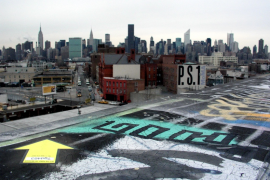As part of our second research seminar on September 22 (which, by the way, was an excellent conversation between the whole team and their deliciously complementary approaches), I wanted to surface some tensions in the concept of ambience that I hope we can work through in our research programme.
We might begin from the everyday use of the idea of ambience, as something like atmosphere, a quality of place that is sensed and felt as a background quality. That is not to assume that an ambience is passive; a cathedral, a dancehall, or a shopping mall will all have distinct ambiences that will produce different repertoires of embodied behaviours. Most commentators also point out that the term derives from ‘ambire,’ the Latin for to ‘go around.’ So an Ambient Literature might be a literature that ‘wraps around us’ like an ambience. A literature that has a background quality. But how can the literary be background? For a text to be ‘literary’ it rather seeks to command the foreground of our attention, indeed this may be a distinguishing feature of the literary as opposed to other text forms, such as magazine, signage, free newspapers. The traditional appeal of the literary experience is precisely that it removes us from our surroundings by immersing us into the world of the text.
Or is ambient literature a form of writing that draws upon, deploys and mobilizes the ambience of any given environment? A literature that is of the cathedral, dance floor or shopping mall? Here the ambience would stay background, form the mise en scène, the ground, from which the text would emerge and play out.
This second possible interpretation of the term ambient in our formulation is enabled by its entanglement with a third set of meanings derived from the idea of ambient computing. By this I mean that it seems to me that we couldn’t be thinking about situated literary experiences as anything other than a tiny cultural sideshow (enhanced guidebooks etc.) if ubiquitous computing hadn’t enabled the delivery of context specific content and thus opened up the possibility that every data environment could be aestheticized by e.g. musical, movie or literary content.
In a key passage in his essay Ambience and Ubiquity [1], Ulrik Schmidt says that ambient phenomena (including artworks) are ‘undifferentiated, deheirarchized and decentred.’ For him, a key feature of the ambient is that it dissolves the distinction between figure and ground which become ‘objectless.’ It does not (and must not) establish ‘local centres or pregnant elements that stand out from the rest.’ Moreover, although such phenomena are temporal and unfold in time, they are distinguished by having no teleology, no start or end time. Crucially for us, this definition of ambient phenomena is ‘opposed to the way a narrative structure, for example, organises its own immanent time-space’ (p. 178). He goes on to discuss how ambience may produce distraction (when our attention simply shifts aimlessly over the field) or may become immersive (when one feature of the field commands our complete concentration). However, for Schmidt the ambient remains resolutely non figurative in this transformation from distraction to immersion.
In his essay Distraction Reconsidered: On the Cultural Stakes of the Ambient [2] Malcolm McCullough argues from a very different perspective (from design & HCI rather than art theory) for an ethics of ambience that challenges the chaos of meaningless information overload. Here we find McCullough adapting a tradition of embodied cognition and arguing for ‘tuning in’ (attending, being focussed) as the antidote to a background of ‘empty information calories.’ In contrast to Schmidt, McCullough sees context not as a flat non figurative field but as constitutive of meaning, saying that ‘the cognitive role of surroundings is to serve as riverbanks for the flows of data and communication.’ We experience data flows in context, the city, the street, the bus, and these contexts cannot and should not be erased: ‘surroundings provide sites, objects and physical resource interfaces for those electronic flows to be about.’ By achieving a balance of contextually relevant and enriching information, we may achieve a quality of attention (McCullough even terms it a kind of mindfulness) that restores human value: ‘The kinds of sensibility that attention to surroundings helps to cultivate seem very necessary to productivity and wellbeing in an age of information superabundance and overconsumption’ (p. 212).
Here, we begin to approach an aesthetics that interests me in this research process. A situated literary experience that begins in our general sense of and immersion in the ambience of a situation, which may then be subtly manipulated to produce modes of attention that become immersive through the way they make cultural experiences from ambient materials. I think we are aiming for a kind of literary orchestration that can produce particular kinds of fleeting figuration against the ground of any given site. A ‘figuration’ here in the form of narrative, poetic or dramatic text that offers audiences the kinds of immersive experience championed by McCullough as a way of engaging with our shared worlds, with our histories, and with one another.
Jon Dovey
Oct 3 2016.
[1] Schmidt, U. (2013). Ambience and ubiquity. In U. Ekman (Ed.), Throughout: Art and Culture Emerging with Ubiquitous Computing (pp. 176–187). Cambridge, MA: MIT Press.
[2] McCullough, M. (2015). Distraction reconsidered: On the cultural stakes of the ambient. In U. Ekman, J. D. Bolter, L. Diaz, M. Sondergaard, & M. Engberg (Eds.), Ubiquitous Computing, Complexity and Culture (pp. 205–213). New York and London: Routledge.








Comments are closed.